Soft, fluffy cozy and comfy……ahh, and now you can just think of a comfortable sleep. These are the things we imagine as soon as we hear feathers, right?? But what about when we have to make a purchase and are faced with two options, down and feathers?
And that makes us wonder…… Is there any difference between the two since they both come from birds? The answer is Yes!
Even though both down and feathers are found on birds, there is a lot of difference when it comes to choosing which is the best in terms of filling for your comforter/duvet or pillow.
The type of filling directly affects the warmth, weight, price, and feel of your duvet/ quilt, as well as choosing the right insulation material could help you get a comfortable sleep. We understand the confusion when it comes to deciding the best pillow or duvet for your needs, and that’s why we have made a precise list of all the things you need to keep in mind while making your next purchase for a down or feather product.
What Is Down?
Down is the light, airy and fluffy coating of small feathers that are found under the visible layer of feathers in birds such as; geese, ducks, and waterfowl. Down can be understood as dimensional clusters that are made up of fluffy filaments and have an undetectable quill. Pure Down is a lot lighter since they don't have long stems like that of feathers. Duck or Goose down is perfect for providing you with warmth and proper insulation if that is what you are looking for.
Since they are considered to provide more warmth than regular feathers, it's one of the more reasons to find that most good quality winter comforters/ duvets and jackets have this type of down filling. The composition of down feathers makes them lighter and fluffier than others, which adds to an airy and soft texture. Because of their light and fluffy, properties, pure down is also considered to be one of the best fillings for your quilt and fluffy pillows.

How Does Down Work?
Down gets formed by breaking into down clusters, manufacturers remove any quill that would be found in the material before forming down clusters. There are lots of fibers that form a network in every direction to give the bedding a fluffier look.
Down has an insulating property that traps air pockets, which then traps warmth from your body and helps provide you with more comfort and better insulation. Its small clusters help provide better insulation by providing you with the perfect warmth-to-weight ratio, as they don’t generate heat but hold in heat.
Down also has the ability to absorb moisture and sweat released by our bodies, which helps ensure a cozy and calm sleep during the night. It also has the outstanding ability to breathe which ensures proper regulation of temperature and gives it one of the best insulation properties when it comes to heating and cooling features. You might notice down to be a more expensive option as compared to feathers or synthetic fibers since it is difficult to obtain, unlike feathers that are abundantly available on birds.
What Do The Fill Power And Fill Weight Mean In Down Bedding?
Fill helps determine the quality of your bedding in terms of fluffiness and softness. More fill means that the fill power is higher, and the comforter/ duvet will provide you with more warmth. It also helps determine the quality and durability of the quilt, as a duvet with higher fill would mean it lasts longer.
Fill power: The fill weight helps determine the quality of your down bedding in terms of the loft. If the fill is higher, it could help provide better insulation and also help recognize a good quality bedding item.Loft helps determine the fluffiness of a product and is only considered for down options.
Fill weight:The fill weight describes the number of clustersthat are packed in your pillow, a.k.a. the volume of down clusters in your pillow. In layman’s terms, you can just refer to this as “How much down is in my product”. This helps understand the quality and firmness’ softness of your bedroom addition.
Why Is Down Preferred For Winter Products? (Advantages Of Down)
Down is often preferred because of its insulation properties; since it has an unstructured nature of cluster, it helps trap air and provides us with more warmth.
Down is primarily found in the breast areas of a bird and is more difficult to separate, which is also one of the main reasons for it being more expensive than feather fill.

How Are Down And Feather Separated?
The process of separating down and feather is simple; they are put into an air chamber to be twirled around, the air is pumped into the chamber at regular intervals, and when it is stopped the larger feathers sink to the bottom and the light down ones stay on top. After the air is stopped, it becomes easy to distinguish between down and feathers; this is one of the earlier processes of separating them.
What Are Feathers?
I am sure all of you would have seen and felt the soft touch of a feather sometime in your life. Remember how they look……so soft and cozy that they remind you of a comfy sleep. Can you recall the noticeable quill which is laid out so perfectly as soon in a feather? That is how they can be differentiated physically by a layman.
Feathers have a well-defined and noticeable quill, with small hair-like strands coming out from the center. Since feathers are a two-dimensional structure, they do not trap air as effectively as down; which states they have less insulation value. One of the main purposes of feathers is to provide a bulkier bedding option. This heavier structure of feathers helps provide the pillow with much more support, which increases the durability of your feather bedding. The resiliency of feathers makes it an ideal option for decorative pillows.
Another reason to consider this bedding addition is its affordability, feather-related bedding options are known to be cheaper than down-filled.
What Are The Advantages Of Feathers?
Feathers are relatively inexpensive as compared to down. So, if you are on a budget, then this is an option you might want to consider.

What Is Down Versus Feathers?
Since down is derived from feathers, it is easy to be confused. Feathers are the outer layers of the bird. Whereas down is actually the inner part of a duck or goose that helps to keep you warm during winter months. Feather has a noticeable quill, whereas down has a quill that is almost undetectable since it is a large unstructured fiber.
In the case of pillows, you would find many products with a combination of both down and feather. But down is used extensively for all down comforters.
Before making a purchase, it's important to understand the distinctions and similarities between down and feather pillows. In order to make your search for the greatest pillow easier, read on know more.
What Does Down To Feather Ratio Mean?
Down to feather ration simply refers to a mixture of down and feather filling in a product. The ratio merely depends on the quality and specifications of an item. More down could mean that the product has better down filling and could provide more warmth but should not be confused with better quality. Some feathers in pillows and comforters could help make the product stand out by providing it with some amount of rigidity. A mix of both of these blends is typically more affordable than pure down-filled products.
How To Take Care Of Down-Filled Products?
Down has a three-dimensional cluster-based structure that has nearly no quill and is easy to compress. This makes it resilient to last for years provided you take proper care of it. It is recommended that you wash the down-filled item very minimally. The best would be to dry-clean or spot-clean the material as and when need be, since washing down and feather related products could cause the fill to poke out from the product.
The use of duvet covers and pillow protectors is also strongly recommended.

What All To Consider When Deciding Between Down And Feather:
Flexible:Down is known for having wonderful elasticity, which means that even if you compress it, it comes back to its original shape very soon.
Compressible:As compared to other non-natural fibers, down has a more compressible nature which means that it is easy to pack it into a small space. This ability of down can be felt when we store away our winter jackets and find them in the same shape next year.
Light: Down has the great advantage of being super light in terms of its weight as compared to feathers. I know you must be thinking about your super lightweight Canadian winter jacket right now!! Yes, a duvet can also be that light.
Durable/ long-lasting:If handled with the right amount of care, down bedding lasts can last for very long. Even feather materials can last long provided taken care of.
Breathable:A good down duvet should allow air to pass through the material.
Ecological impact:Feathers and down are both natural materials since they are found on birds, mostly ducks, geese, and waterfowl. As you may know, there are many ethical concerns regarding down as a product, it is difficult to keep a track of how they are being treated before down is taken from the birds.
Price:Down bedding items are much more expensive than feathers since they have a longer lifespan and also provide for a fluffier experience. Feather bedding, on the other hand, is the ultimate budget-friendly option.
What Are The Disadvantages Of Down?
Down is susceptible to moisture, which means that you need to be careful when washing down. Since down feathers have a three-dimensional structure, they lose their insulating power when they come in contact with water, and also take longer to dry. You should follow the proper instructions that come with your bedding material for both down and feather items.
Another reason some people might not prefer down is that it not being a hypoallergenic material. Down is more expensive than feather because of its restricted availability to be found in nature.
What Are The Disadvantages Of Feathers?
Since feathers have a two-dimensional structure, it is difficult to retain the fluffiness for longer. Feathers cannot maintain significant support for the longer term and tend to sink. As for pillows, you are most likely to find that they contain some amount of down, even if it’s less than five percent; to help them from getting flat.
Occasionally, you might notice a feather peeping out of your pillow or comforter, this is because of the hard quills in feathers, which might also seem to have a plastic-like texture. Further, you may hear some shuffling noises in your pillow once in a while.
It is ultimately up to you to decide what you would like to purchase, but keep in mind to check the fill power and determine the quality of your bedding items before you make a purchase. Keep in mind some goose-down products that are made offshore are not cleaned and sanitized to Canadian standards and thus potentially result in sleeping with more dust mites, allergens & toxins.Canadian down duvets are considered to be one of the utmost quality in the market. It is always significant to take note that items of such nature can be misleading when exported from other countries, and you also buy from a reputed source.


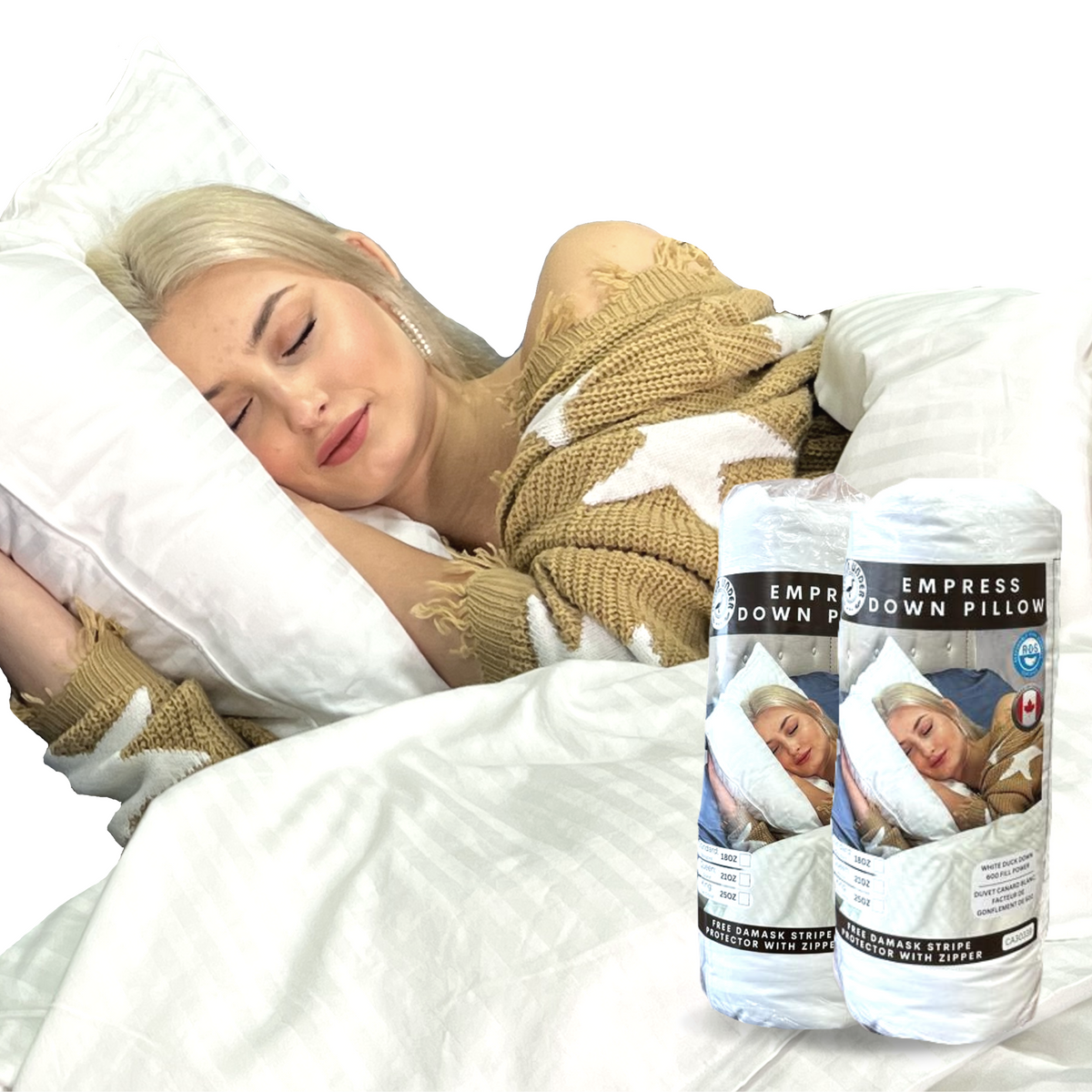
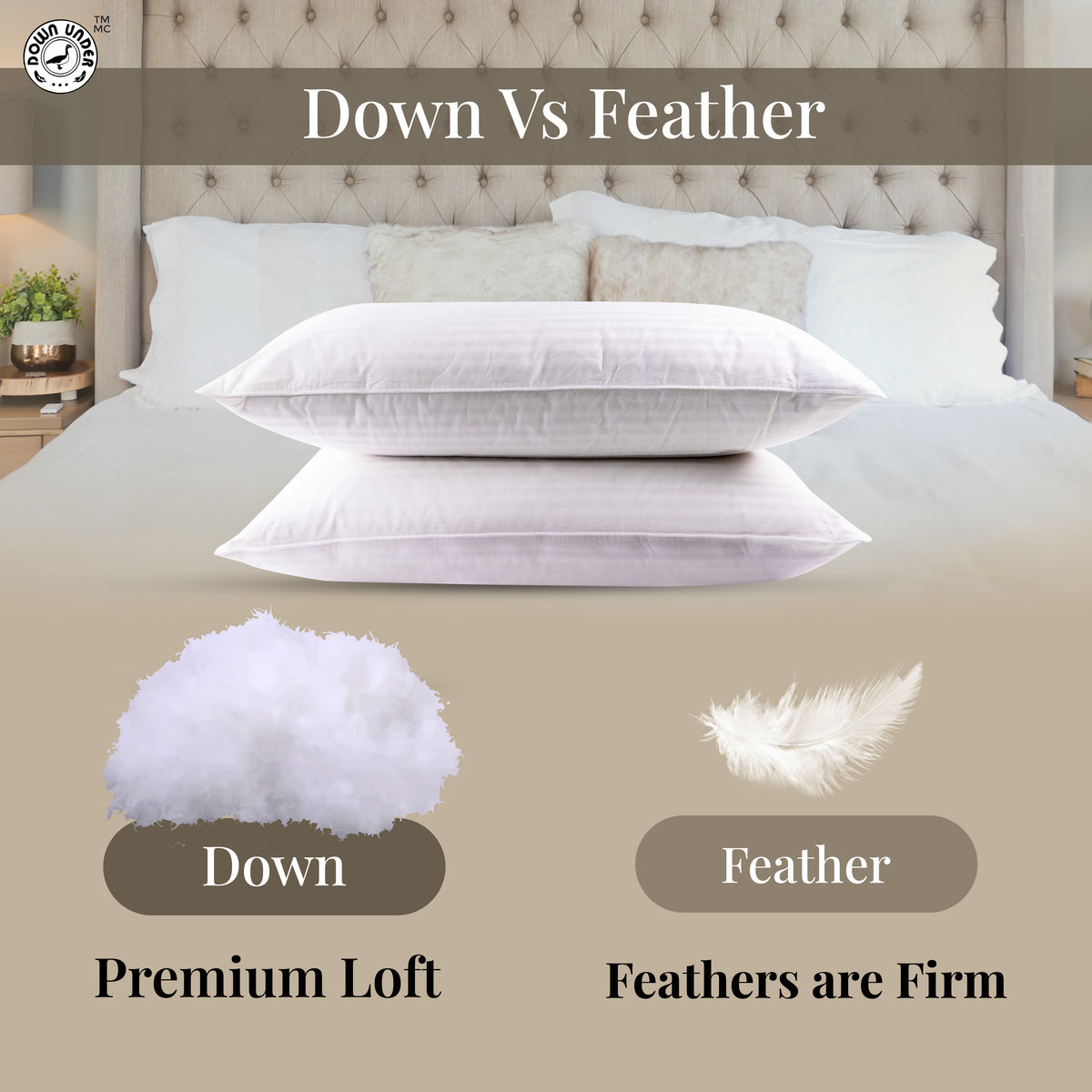
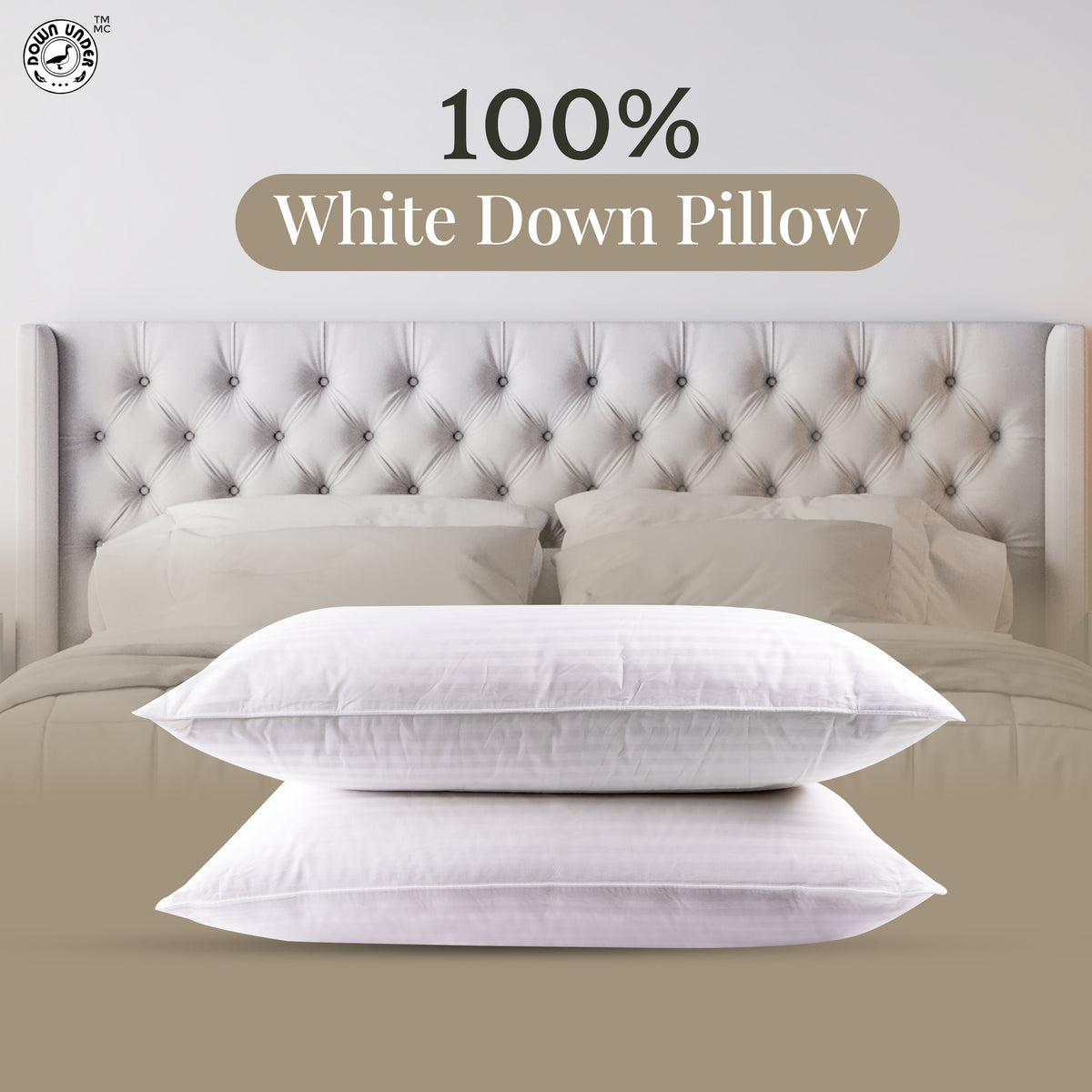
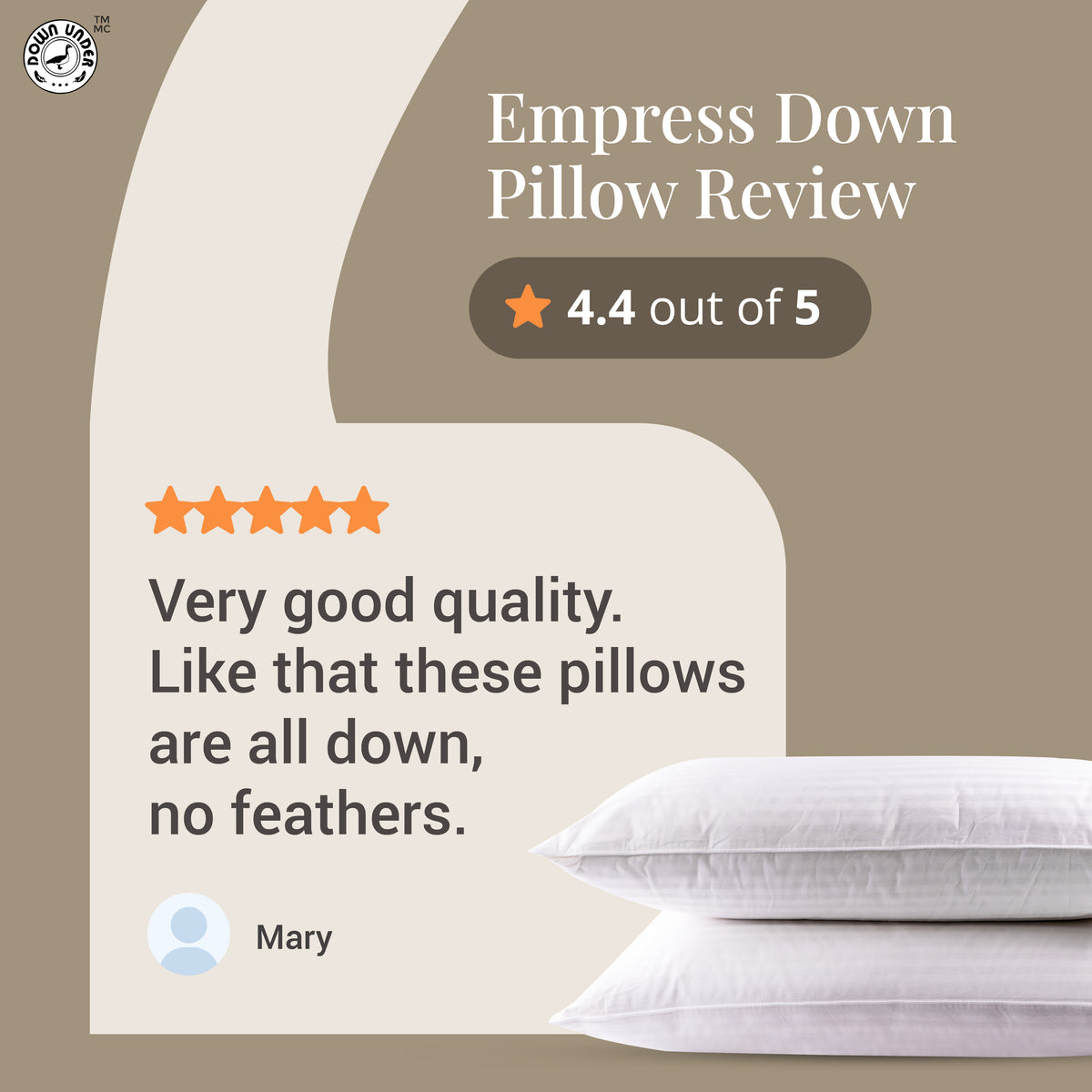
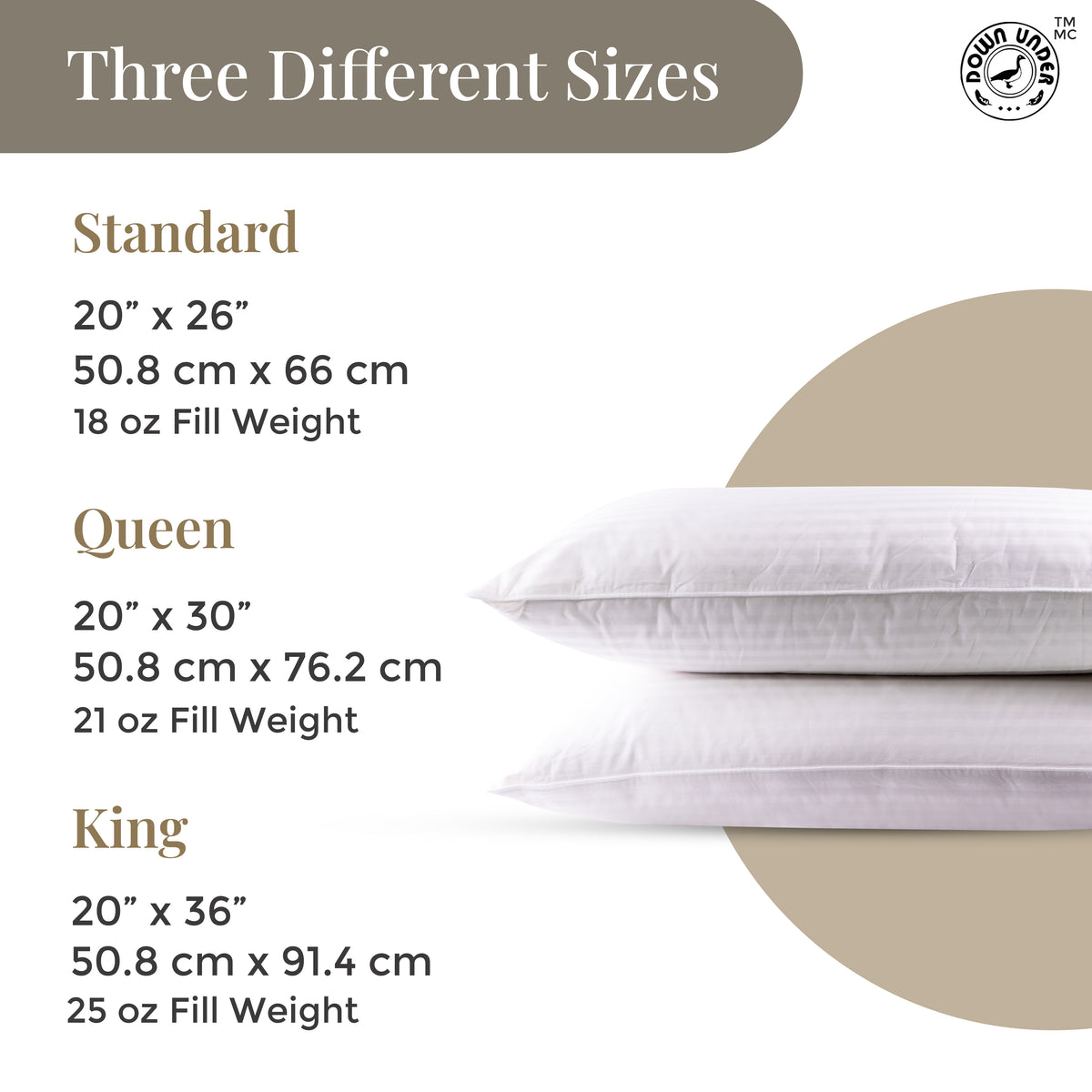
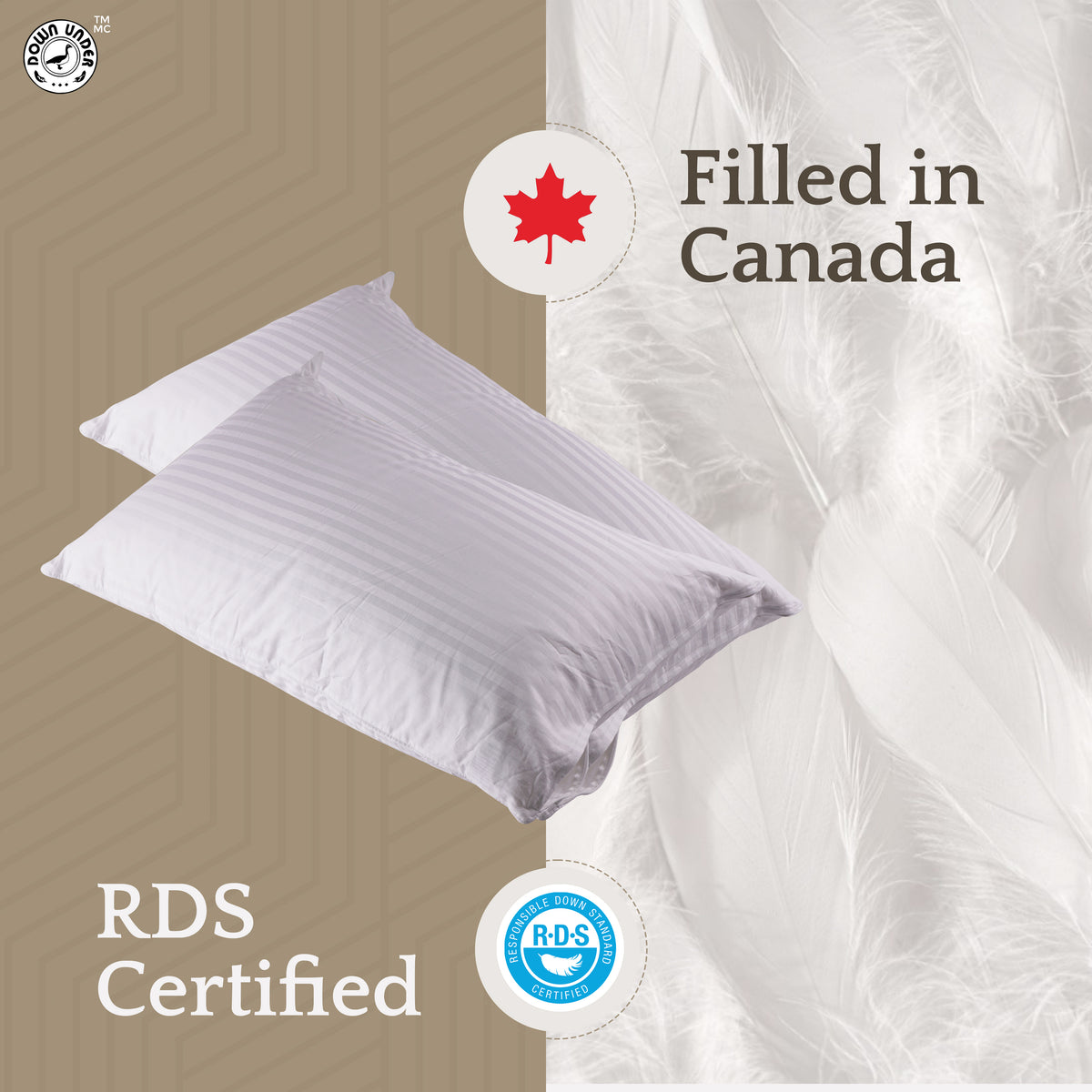


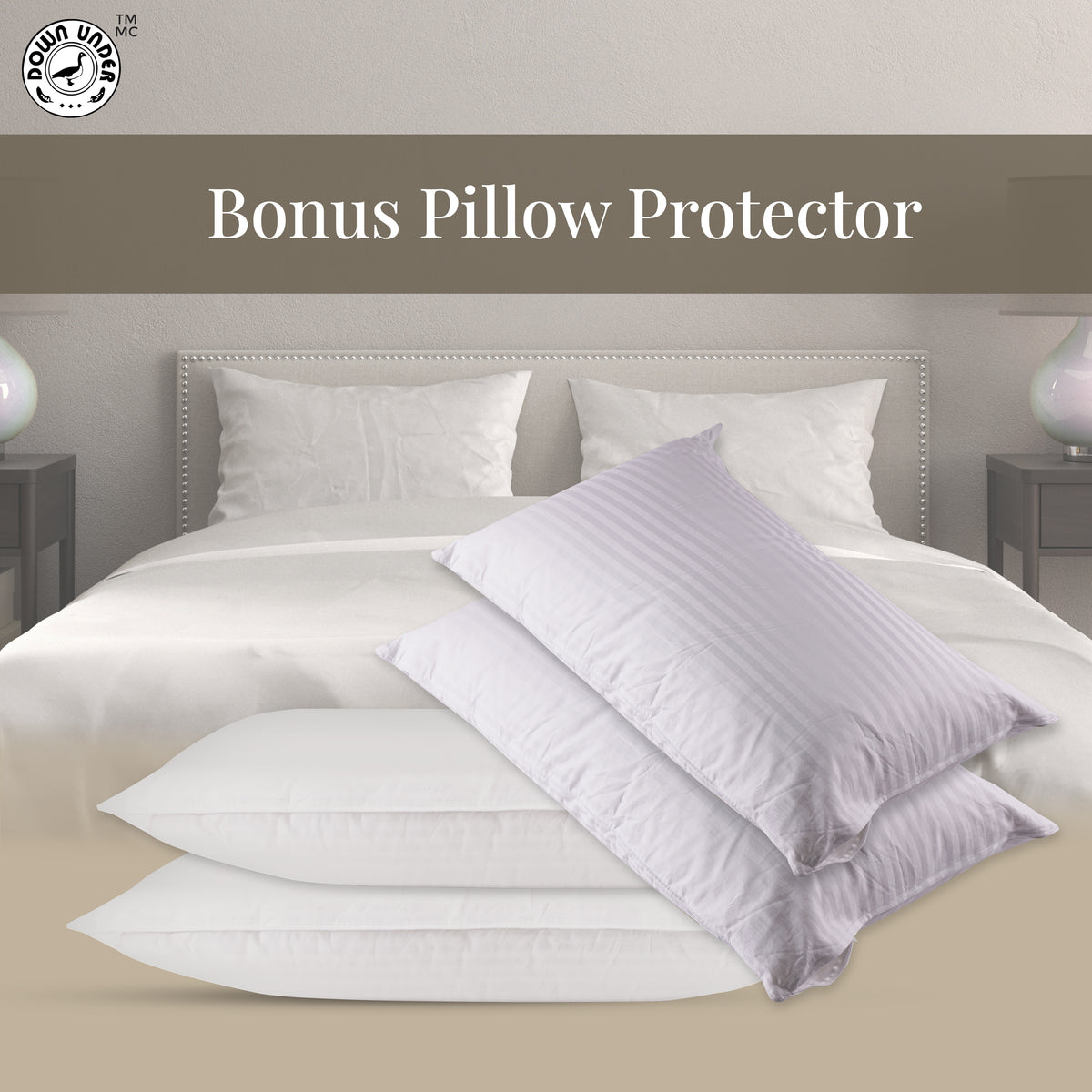
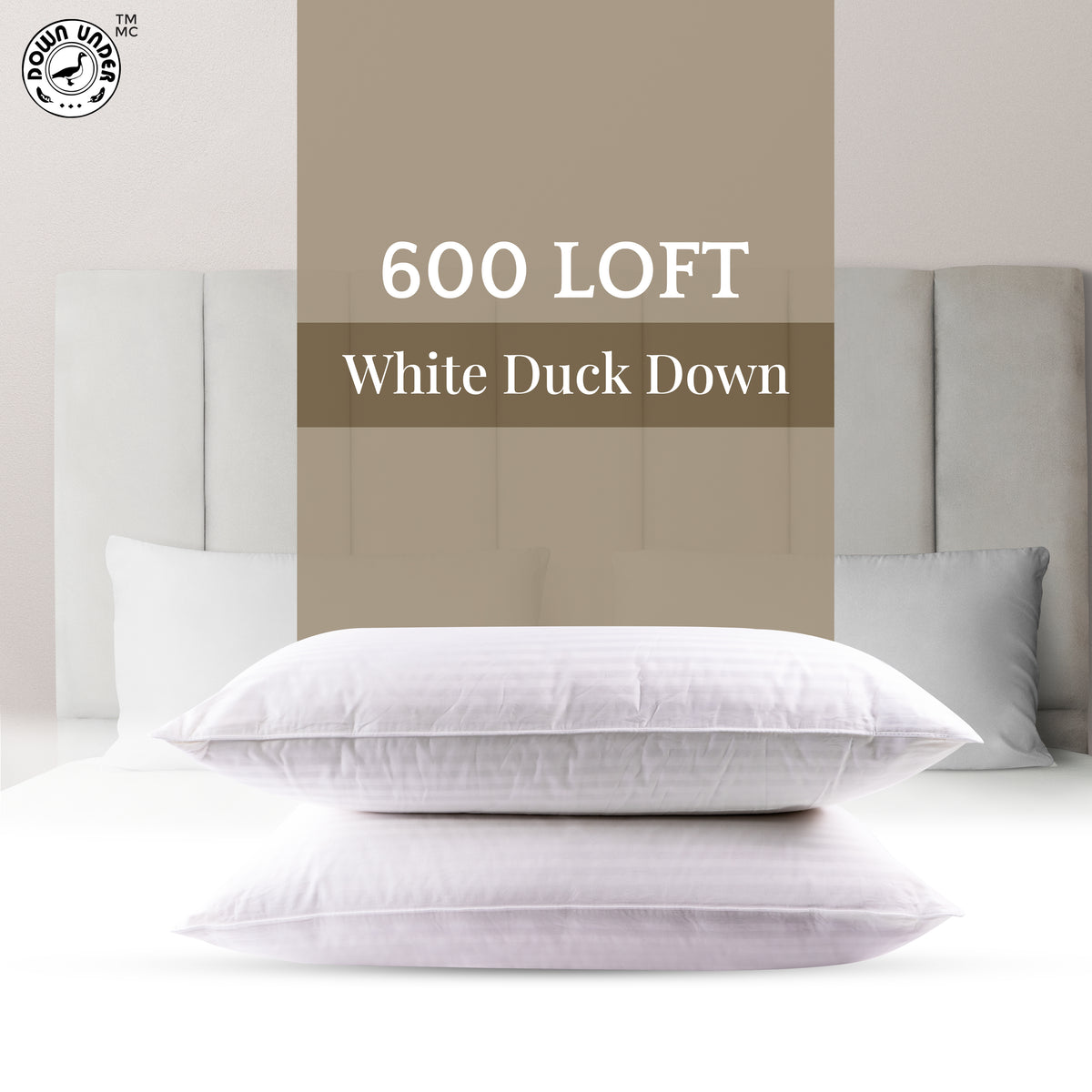
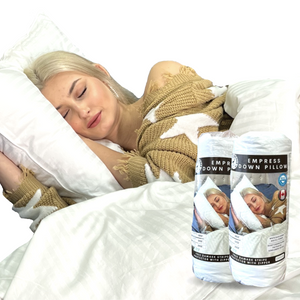

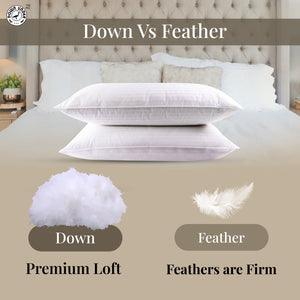
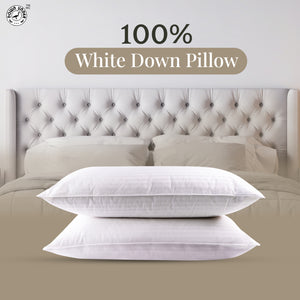
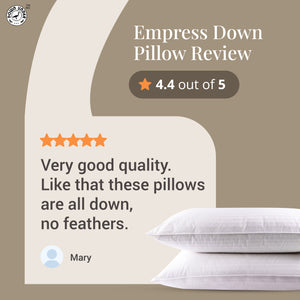
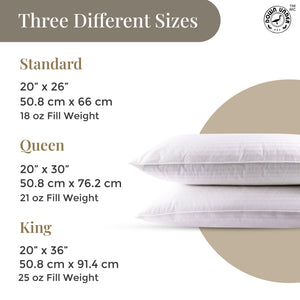
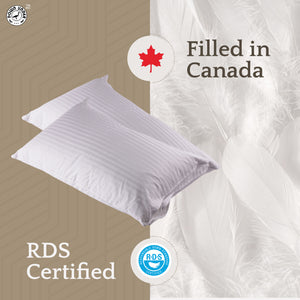

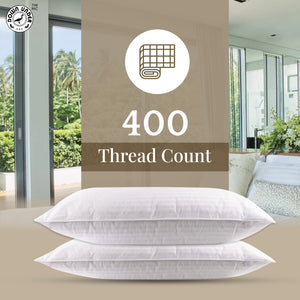
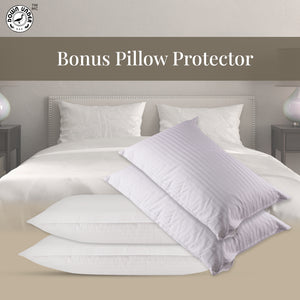
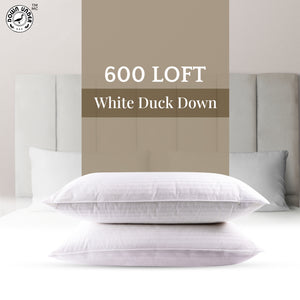





Monique Lapensee
November 19, 2025
I have found, in my storage unit, a Monaco white goose down comforter and need to get the “storage smell” out. Dry cleaning costs over $60.00. Can i wash it?